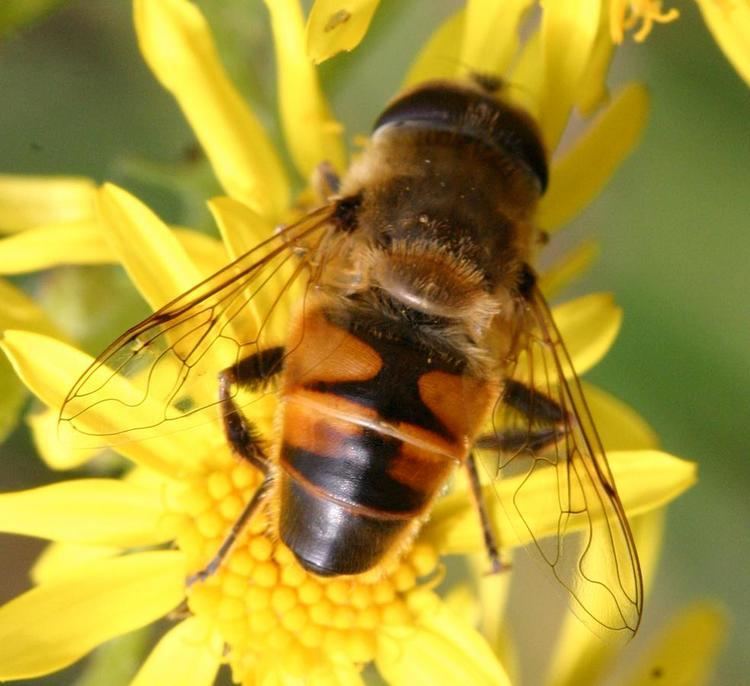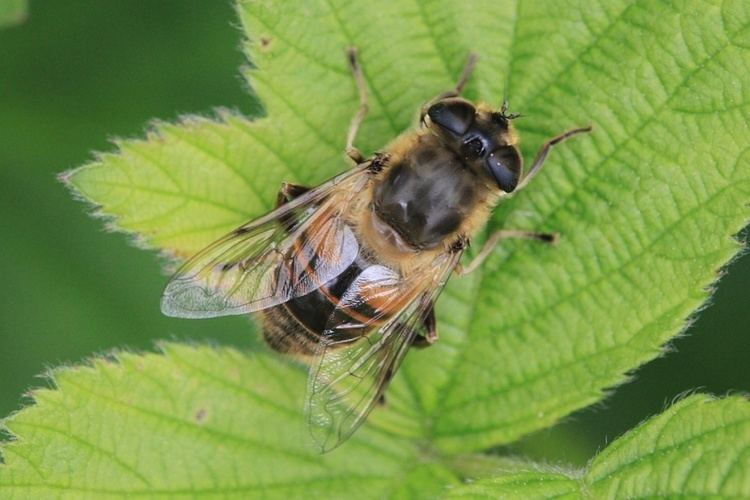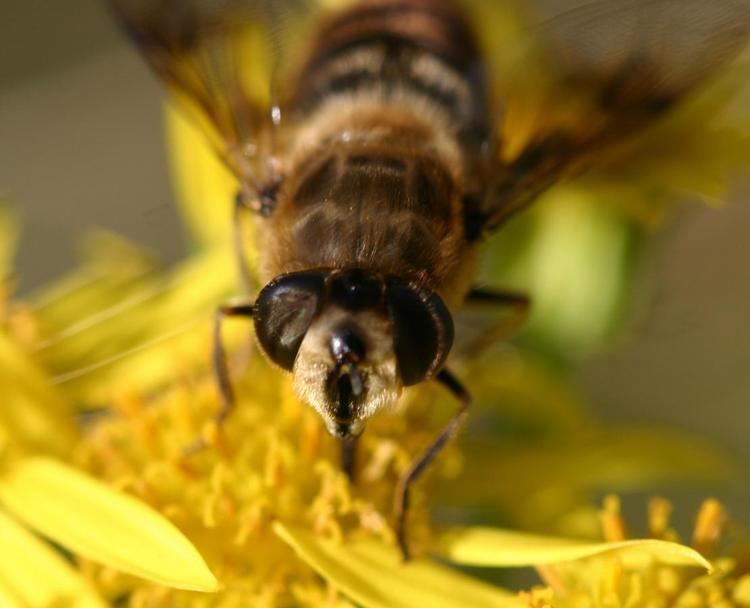Kingdom Animalia Order Diptera Genus Eristalis Scientific name Eristalis tenax Rank Species | Phylum Arthropoda Family Syrphidae Subgenus Eoseristalis Higher classification Eristalis | |
 | ||
Similar Eristalis, Hoverfly, Insect, Fly, Eristalis arbustorum | ||
Drone fly eristalis tenax honey bee mimic
Eristalis tenax is a hoverfly, also known as the drone fly (or "dronefly"). It is migratory and cosmopolitan; the most widely distributed syrphid species in the world, known from all regions except the Antarctic.It has been introduced into North America and is widely established.
Contents
- Drone fly eristalis tenax honey bee mimic
- Eristalis tenax
- Overview
- Identification
- Technical Description
- Diet
- Infection
- References
Eristalis tenax
Overview

The larva of E. tenax is a rat-tailed maggot. It lives in drainage ditches, pools around manure piles, sewage, and similar places containing water badly polluted with organic matter. The larva likely feeds on the abundant bacteria living in these places.

When fully grown, the larva creeps out into drier habitats and seeks a suitable place to pupate. In doing so it sometimes enters buildings, especially barns and basements on farms. The pupa is 10–12 mm long, grey-brown, oval, and retains the long tail; it looks like a tiny mouse.

The adult fly that emerges from the pupa is harmless. It looks somewhat like a drone honey bee, and likely gains some degree of protection from this resemblance to a stinging insect. The adults are called drone flies because of this resemblance. In its natural habitat, E. tenax is more of a curiosity than a problem. Like other hover flies, they are common visitors to flowers, especially in late summer and autumn, and can be significant pollinators.
Identification
Large (wingspan 15mm), stocky, bee mimic. Eyes are marbled in black. Males have hovering displays.
Technical Description
External images For terms see Morphology of Diptera

Wing length 9·75-13 mm. Stout appearance.Femur 3 thick, hanging down while hovering.Antennomere 3 brownish-black.Tergite 2 with yellow, orange or reddish side-markings. Arista bare.Eyes brown-haired, with two distinct bands of dense and darker hair.Male eyes clearly holoptic. All tarsi black. The male genitalia are figured by Hippa et al. (2001) The larva is figured by Hartley (1961) and in colour by Rotheray (1993)
Diet
Adults feed on flowers, especially those of carrot and fennel.
Infection

There have occasionally been documented cases of human intestinal Myiasis of the rat-tailed maggot (larva of Eristalis tenax). Infection can be asymptomatic (no symptoms) or can manifest as symptoms ranging from abdominal pain, nausea and vomiting, to anal pruritus. Infection can be caused by ingestion of contaminated food or water but doubts have been expressed that accidentally ingested fly larvae could survive in the gastrointestinal tract. Zumpt proposed an alternative called "rectal myiasis". Flies, attracted to feces, may deposit their eggs or larvae near or into the anus, and the larvae then penetrate further into the rectum. They can survive feeding on feces at this site, as long as the breathing tube reaches towards the anus.
